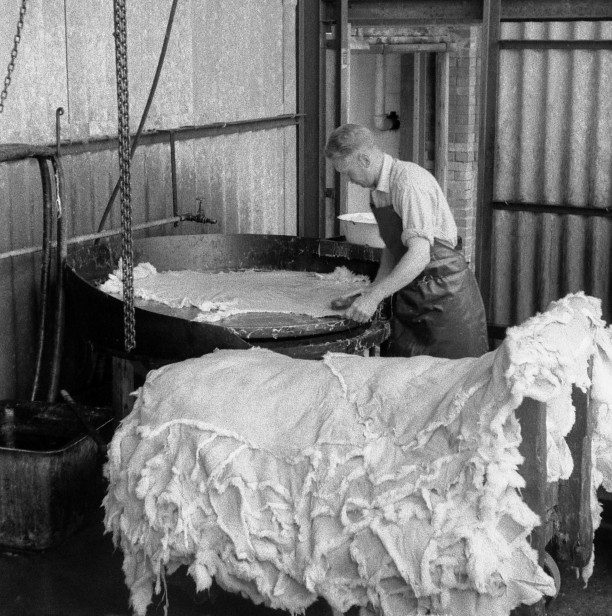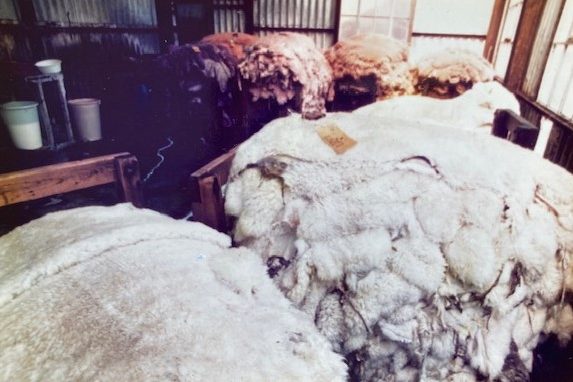It was a horrible messy job – but I think they were well paid, those men, that did that because it was pretty tough work.
[Wendy M, Morlands]
But the tannery side of it was brutal. All the guys had big aprons and wellies and it was, you know, a rough, rough old job.
[Tim, Morlands]

Photo: John Morland
The jobs were hard, in the yard especially, the wet work where they were pulling those wet skins out of the tubs and there was so much wet on the feet – I mean I know they had wellingtons on and they had this big waterproof apron on – but it didn’t really protect them from the chemicals.
[Rosa, Morlands]
The guys who worked in the tannery yard had to have anthrax injections which were not very pleasant!
[Shirley, Baily’s]

Photo: Terry Gulliford
But then I used to have to go to the worst one of the lot which was raw skins. Oh, that used to smell horrible. And it was even worse if the skins had come from South America because nine times out of ten, they’d have maggots in them, and you could almost see the skins walking across the yard all on their own. Oh, it was, it was horrible, it really was horrible!
[Julia, Morlands]
The wet shop I think was a bit of an eye-opener for people because it wasn’t a very nice place for people to work. I mean lots of people stayed there until they retired, but you’d get some young people who’d come and they’d be there about six weeks and then ask, could we go, or is there another department we could go into or whatever.
[Gloria, Baily’s]
I went on down to stoving, which is actually where they dried the skins. That was a lovely stop on a winter’s day. You’d get lovely and warm in there before you had to go back out again.
[Julia, Morlands]

